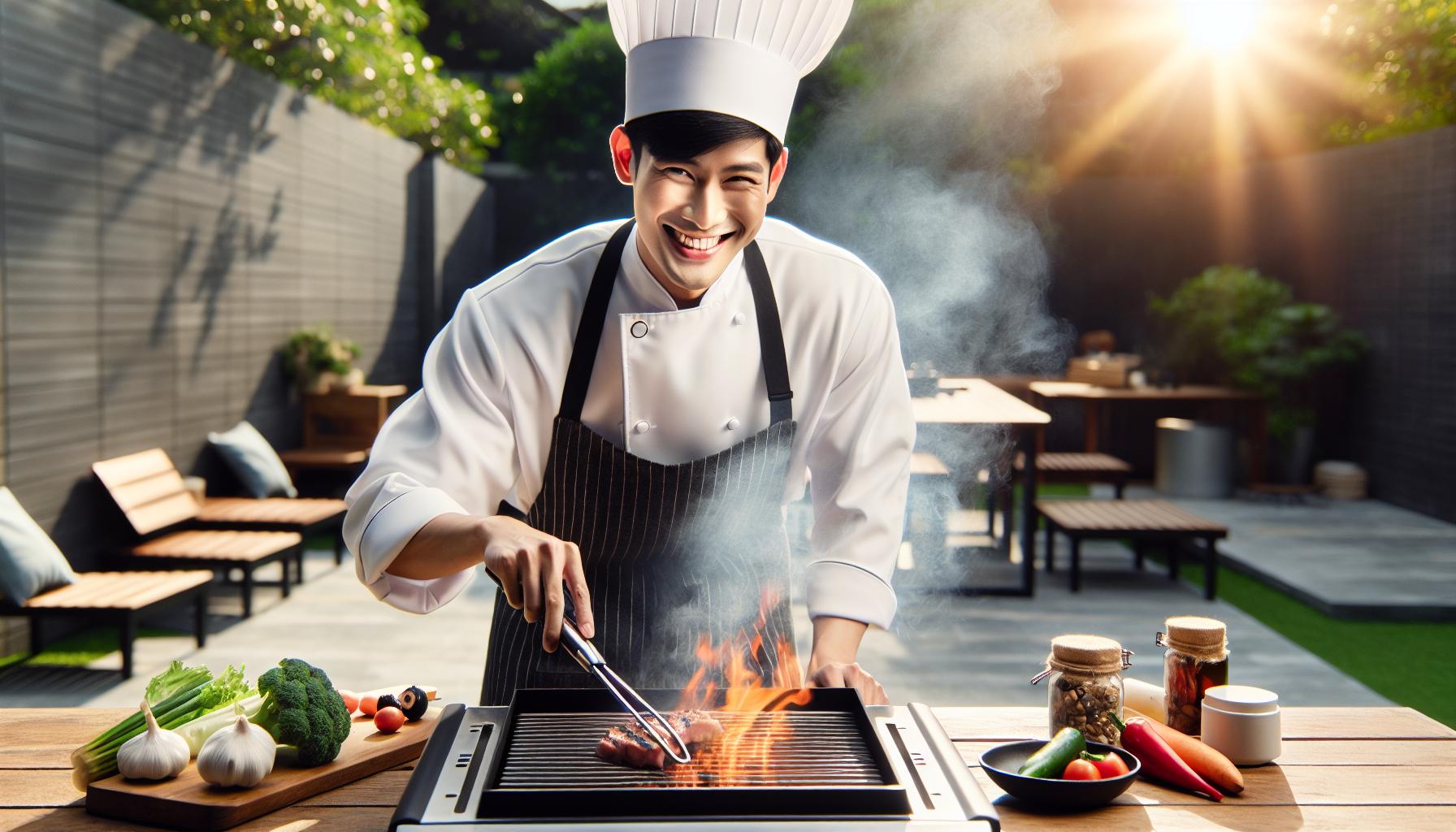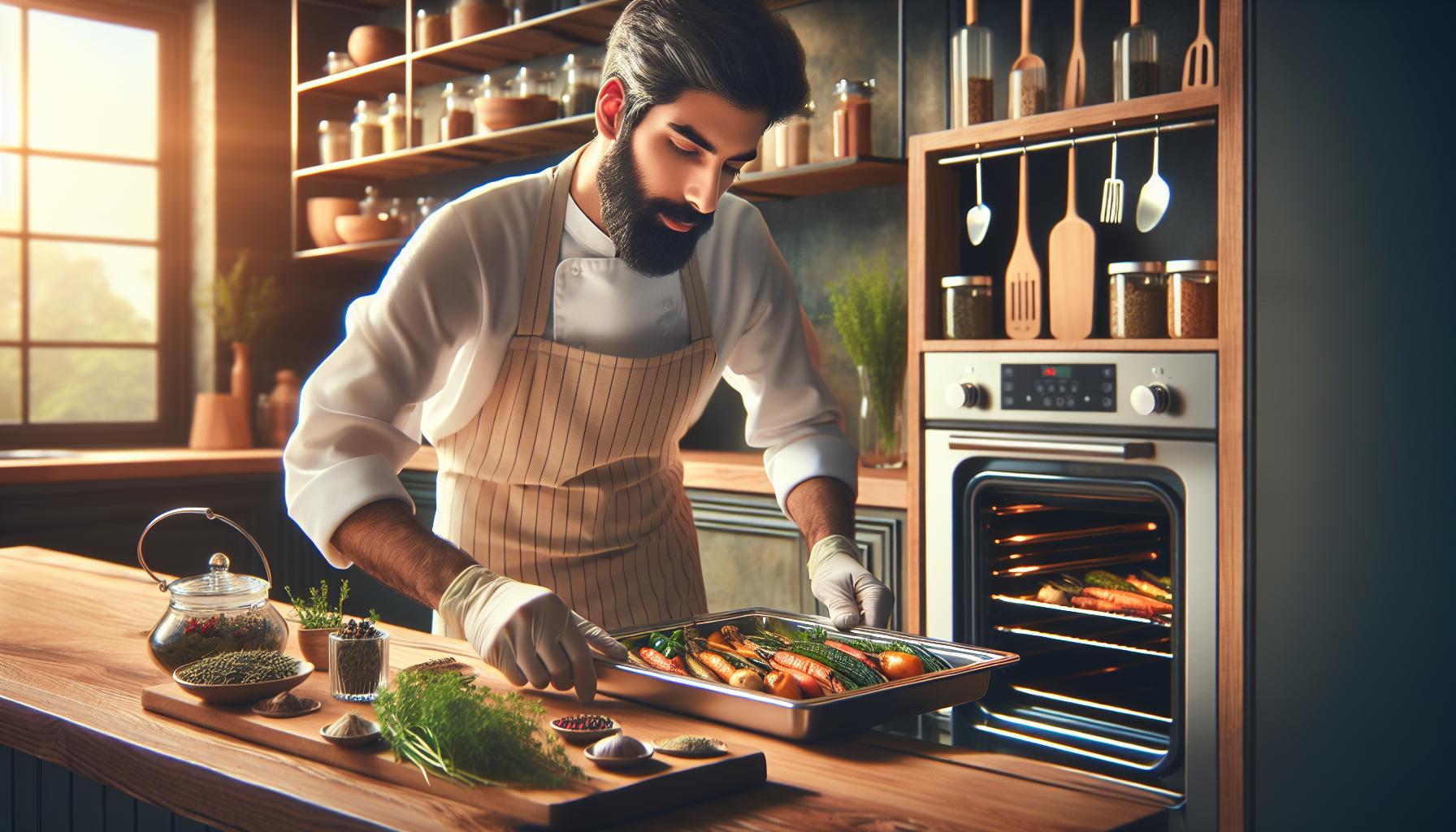Phone:
(701)814-6992
Physical address:
6296 Donnelly Plaza
Ratkeville, Bahamas.

Mastering dry cooking techniques can transform an amateur cook into a culinary virtuoso. From achieving the perfect sear on a steak to creating crispy roasted vegetables these methods rely on heat and minimal moisture to create flavors that’ll make taste buds dance with joy.
Dry cooking isn’t just about removing water from food – it’s about understanding the science of heat and its magical interaction with ingredients. Whether it’s baking broiling roasting or grilling these techniques create complex flavors through caramelization and browning reactions that just can’t be achieved through wet cooking methods. For home cooks and professional chefs alike mastering these fundamental skills opens up a world of culinary possibilities that’ll impress even the most discerning food critics.
Dry heat cooking methods rely on air or fat to transfer heat to food. These techniques create distinct flavors through browning reactions while maintaining the food’s natural moisture content.
Direct heat cooking exposes food to immediate heat sources like grilling over flames or broiling under heating elements. The food receives intense heat (400-500°F) from one direction, creating a seared exterior while maintaining interior tenderness.
Indirect heat methods circulate hot air around food at lower temperatures (300-375°F) through:
Dry cooking methods enhance food through multiple mechanisms:
| Benefit | Result |
|---|---|
| Maillard Reaction | Creates complex flavors through protein-sugar reactions |
| Caramelization | Develops sweet brown crusts on food surfaces |
| Fat Rendering | Releases natural flavors while creating crispy textures |
| Nutrient Retention | Preserves vitamins by limiting moisture loss |

Roasting and baking transform raw ingredients into flavorful dishes through controlled heat application in an enclosed environment. These techniques create rich flavors through caramelization while maintaining food’s natural moisture content.
Professional kitchens maintain precise temperature control at three key levels: 325°F for delicate items, 375°F for standard baking, and 425°F for high-heat roasting. Preheating the oven for 15 minutes ensures even heat distribution throughout the cooking chamber. Using an oven thermometer placed in the center rack provides accurate temperature readings, as built-in thermostats can be off by 25-50 degrees. Rotating pans halfway through cooking prevents hot spots from causing uneven browning. Opening the oven door reduces temperature by 25-50 degrees, making quick checks essential for maintaining consistent heat.
Root vegetables develop concentrated sweetness through roasting at 400°F for 25-35 minutes. Large cuts of meat benefit from low-temperature roasting at 325°F to achieve tender results. Poultry reaches optimal crispiness when roasted at 375°F for 20 minutes per pound. Fish fillets require high heat at 425°F for 12-15 minutes to maintain moisture while developing a golden crust. Dense vegetables like Brussels sprouts caramelize perfectly at 400°F in 20-25 minutes. Whole chickens achieve crispy skin through roasting at 375°F for 75-90 minutes. Nuts toast evenly at 350°F in 8-10 minutes.
| Food Type | Temperature (°F) | Cooking Time |
|---|---|---|
| Root Vegetables | 400 | 25-35 mins |
| Large Meat Cuts | 325 | Varies by weight |
| Poultry | 375 | 20 mins/lb |
| Fish Fillets | 425 | 12-15 mins |
| Brussels Sprouts | 400 | 20-25 mins |
| Whole Chicken | 375 | 75-90 mins |
| Nuts | 350 | 8-10 mins |
Grilling and broiling employ direct heat exposure to cook food at temperatures between 400-550°F. These high-heat methods create distinctive char marks and caramelized crusts while sealing in natural juices.
Indoor grilling utilizes electric grills or stovetop grill pans that reach temperatures up to 500°F. Electric grills feature non-stick surfaces with raised ridges that create grill marks on food surfaces. Stovetop grill pans made of cast iron or stainless steel provide consistent heat distribution across cooking surfaces.
Outdoor grilling offers two primary heat sources: gas grills that use propane or natural gas burners for precise temperature control charcoal grills that generate intense heat through burning briquettes or lump charcoal. Charcoal grilling imparts a distinct smoky flavor to foods like steaks chicken fish vegetables. Gas grilling enables quick temperature adjustments through multiple burner controls digital temperature displays.
A quality grill forms the foundation of proper grilling equipment selection. Heavy-duty tongs measuring 16 inches in length allow safe food handling at high temperatures. Sturdy metal spatulas with long handles enable easy flipping of burgers fish fillets.
Temperature monitoring tools include:
| Tool | Purpose | Temperature Range |
|---|---|---|
| Instant-read thermometer | Internal meat temps | 0-220°F |
| Surface thermometer | Grill surface temp | 100-800°F |
| Remote probe monitor | Continuous monitoring | 32-572°F |
Additional essential items encompass metal brushes for grill cleaning metal skewers for kebabs drip pans for collecting grease heavy-duty aluminum foil for wrapping delicate items.
Pan-searing and sautéing create intensely flavored dishes through high-heat cooking with minimal fat. These techniques rely on direct contact between food and a hot pan surface to develop rich browning and texture.
Cast iron pans excel at high-heat searing with superior heat retention and distribution. Stainless steel pans offer excellent food release properties with proper preheating. Here’s a breakdown of optimal pan materials:
| Pan Material | Best Used For | Temperature Range |
|---|---|---|
| Cast Iron | Steaks, chops | 400-500°F |
| Stainless Steel | Fish, vegetables | 350-400°F |
| Carbon Steel | Stir-fries, proteins | 375-450°F |
The pan size affects cooking performance – choose a diameter that allows 2 inches of space between food pieces to prevent overcrowding.
Heat control determines the success of pan-searing and sautéing techniques. Professional kitchens use these temperature benchmarks:
| Cooking Method | Temperature | Application |
|---|---|---|
| High-heat sear | 450-500°F | Steaks, scallops |
| Medium-high sauté | 375-400°F | Vegetables, chicken |
| Medium sauté | 325-350°F | Delicate fish, eggs |
Testing pan temperature involves dropping water droplets – they should dance across the surface at proper temperatures. Oil should shimmer but not smoke before adding ingredients.
Deep frying submerges food in hot oil at 350-375°F to create a crispy exterior while maintaining interior moisture. Air frying offers a healthier alternative by circulating hot air around food with minimal oil.
High smoke point oils remain stable at deep frying temperatures. Peanut oil withstands heat up to 450°F making it ideal for deep frying. Vegetable oil offers versatility at 400-450°F while avocado oil tolerates temperatures up to 520°F. A deep frying thermometer monitors oil temperature preventing dangerous overheating. Proper oil filtration extends useability for 3-4 frying sessions. Signs of degraded oil include dark color excessive smoking or rancid odors. Safety equipment includes fire extinguishers metal lids temperature gauges splatter screens.
| Oil Type | Smoke Point |
|---|---|
| Avocado | 520°F |
| Peanut | 450°F |
| Vegetable | 400-450°F |
| Canola | 400°F |
Air fryers circulate heated air at 375-400°F creating crispy results with 75% less oil than deep frying. Preheating the air fryer for 3-5 minutes ensures optimal cooking temperatures. Single-layer food arrangement maximizes air circulation for even browning. Periodic basket shaking at 5-minute intervals promotes uniform cooking. A light oil spray enhances browning on breaded items. Digital air fryers offer precise temperature control timing functions multiple cooking presets. Large capacity models accommodate 4-6 serving portions. Multi-rack systems enable simultaneous cooking of different foods.
| Air Fryer Setting | Temperature | Time Range |
|---|---|---|
| Standard Frying | 375-400°F | 10-20 min |
| Frozen Foods | 400°F | 15-25 min |
| Vegetables | 375°F | 8-15 min |
| Proteins | 380°F | 12-18 min |
Stir-frying combines high heat and rapid cooking to create flavorful dishes in minutes. This technique originated in Chinese cuisine and relies on precise timing with constant movement of ingredients.
A carbon steel wok provides optimal heat distribution through its curved surface design. Seasoning the wok creates a natural nonstick surface that enhances food release and prevents rust formation. The ideal cooking temperature ranges from 375-450°F, indicated by a drop of water instantly vaporizing on the surface. Professional kitchens maintain their woks at these temperatures using specialized high-BTU burners that generate intense heat.
| Wok Temperature Guidelines |
|---|
| Vegetables: 375°F |
| Proteins: 400°F |
| Searing: 450°F |
Proper ingredient preparation transforms stir-frying into an efficient cooking process. Cutting vegetables into uniform sizes ensures even cooking: julienne carrots at 2-inch lengths, slice onions into ⅛-inch strips, cube proteins into 1-inch pieces. A mise en place system organizes ingredients in order of cooking time: aromatics first, followed by proteins, then hardy vegetables, leafy greens last. Professional kitchens arrange ingredients in small bowls placed within arm’s reach of the cooking station.
| Ingredient Prep Sequence |
|---|
| Aromatics: 30 seconds |
| Proteins: 3-4 minutes |
| Vegetables: 2-3 minutes |
| Leafy greens: 1 minute |
Mastering dry cooking techniques opens up a world of culinary possibilities for both home cooks and professional chefs. These methods transform simple ingredients into flavorful masterpieces through the careful application of heat whether it’s through roasting broiling grilling or stir-frying.
The key to success lies in understanding temperature control proper equipment selection and timing. By applying these principles cooks can achieve the perfect balance of crispy exteriors tender interiors and complex flavors that make dishes truly memorable.
With practice and attention to detail anyone can harness these techniques to create restaurant-quality meals in their own kitchen. The versatility and efficiency of dry cooking methods make them invaluable tools in any cook’s culinary arsenal.